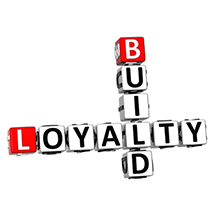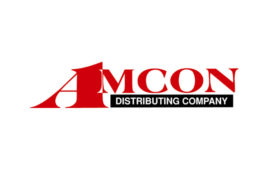 Most U.S. retailers operate a loyalty or reward program, but far fewer figure out the return on investment.
Most U.S. retailers operate a loyalty or reward program, but far fewer figure out the return on investment.
By CSD Staff
Members of retailers’ customer loyalty programs generate between 12-18% more revenue for retailers than do customers who are not members of the loyalty programs, according to new research from digital provider Accenture Interactive.
Those percentages were based on a survey of retailers across specialty, big-box, department, drug and convenience stores. The Accenture research sought to identify key trends and challenges of retailers’ loyalty programs.
“Today’s customer loyalty programs are an increasingly expensive, complex and expansive business that extends beyond the marketing team into the entire organization,” said Farrell Hudzik, managing director of Accenture Interactive’s Global Loyalty and Rewards practice, in a prepared statement. “Given that loyalty program members generate significant incremental revenue compared with non-members, retail loyalty program leaders must anticipate future growth trends and capture the opportunity to differentiate in an increasingly fragmented marketplace.”
It’s especially true in the c-store channel, where smaller retailers aren’t in a viable position to make significant capital investments in certain loyalty programs, especially when counting the cost of equipment installation, employee training and other factors. Many convenience retailers lack the scale—that is the number of stores—to make such an add-on worthwhile, said David Bishop, managing partner of sales and marketing firm Balvor LLC.
While loyalty programs are often adopted by c-stores as a convenient mechanism of differentiation, weighing the return on investment (ROI) is an important aspect of whether a loyalty program is meeting the company’s expectations. For example, is the program generating a class of new patrons or is it just a perk for regular customers?
LOYAL FOLLWING
“Some would argue that the people who are shopping your store most frequently or spending the most with you are going to be the most inclined to take advantage of the (loyalty) program as opposed to that person who comes to your store once a month, who doesn’t see the immediate impact or value of going through whatever processes to sign up,” Bishop said.
One of the factors that c-stores should look at when evaluating a suitable loyalty program is the shopping pattern of their customers, making it important for retailers to understand what aligns with customer wants and behaviors. Other questions that c-stores might ask from their loyalty programs are:
- Is customer data being gathered?
- Is the loyalty program generating more dollar sales since being implemented?
That pattern can help a c-store in choosing a better-tailored loyalty platform, which is going to a be a tool that draws customers and provides them a more complete shopping experience versus having an expensive gadget that provides neither the retailer nor the customer true value.
BY THE NUMBERS
“The core question is, ‘Is this a good investment or not,’” Bishop said. “When you look at the average dollar ring (of a typical c-store transaction) it’s fairly small—we’re talking $5, if not less. Then you take the profitability of that transaction, and obviously it depends on what’s in the basket, it becomes a fairly small amount of profit to cover the incremental (loyalty) costs, which can be quite large.”
Beyond the incremental increase in revenue, Accenture Interactive identified another finding: less than one in five retailers focus on ROI as a key metric of success for their loyalty program. Specifically, when asked to identify success metrics for their program, only 19% of the retailers surveyed by Accenture Interactive cited ROI.
The key areas that retailers focus most on in terms of their loyalty programs are program growth and revenue production metrics—such as membership growth rates (cited by 45% of respondents), share of transactions by members (42%) and number of transactions per year (36%)—as well as member value metrics, such as retention rate (40%) and customer long-term value (37%). Fewer are focused on engagement metrics such as number of reward redemptions (cited by 32% of respondents), campaign response rates (27%) and customers engaged socially (16%).
Bishop said that many convenience stores do revert to basic metrics of their loyalty programs such as rate of user engagement and the average share of transactions by a loyalty card user. However, such metrics fail to address the logical concern: ROI. “At the end of the day it’s very hard for a retailer to show this causal connection between adding a loyalty program and demonstrating the share of wallet that shopper gives to that retailer,” Bishop said.




